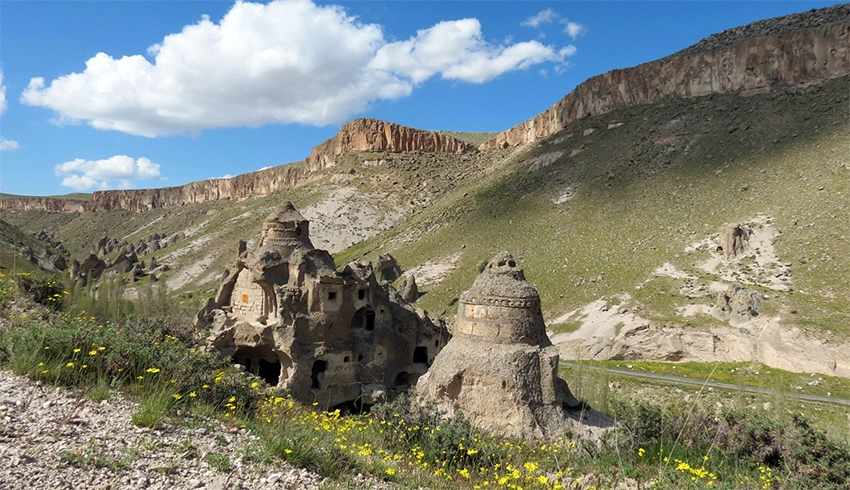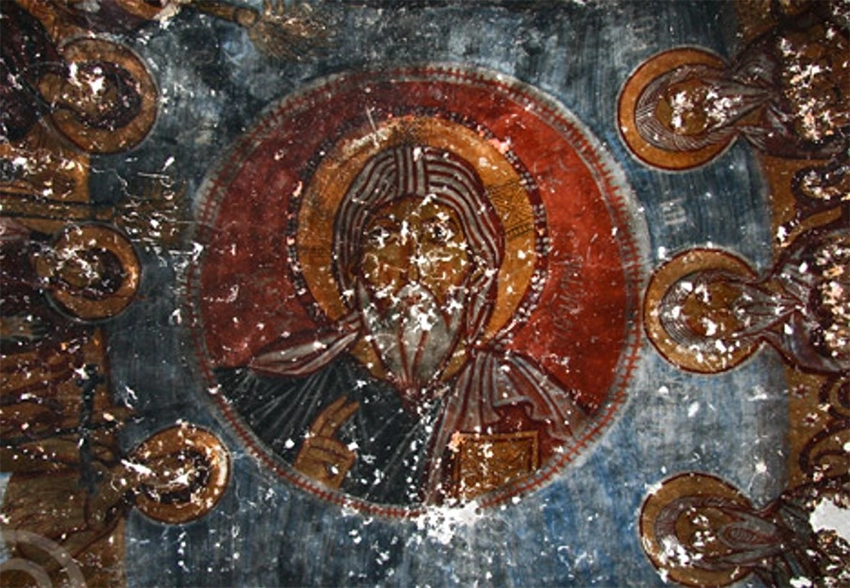Soganli Valley
Soğanlı Valley (Kayseri’s Hidden Cappadocia)
Location and Overview
Located in the Yeşilhisar district of Kayseri, Soğanlı Valley lies about 40 km from Nevşehir and can be reached in just over an hour by car. The valley splits into two main branches Upper and Lower Soğanlı and takes its name from the wild onions once growing on its slopes. Between the 9th and 13th centuries it became a thriving Byzantine monastic center, with around 100 rock-carved churches and monasteries. Today, at least ten remain with frescoes still visible.
Soğanlı is quieter and less visited than Göreme, offering a more authentic atmosphere. Its pigeon houses are still used for agriculture, while the famous Soğanlı dolls preserve a unique local handicraft tradition.

History and Monastic Life
The valley’s golden age was between the 9th and 13th centuries. After the end of the Iconoclastic period, church building flourished. Notable examples include:
- Karabaş Church: Founded 1060–61, linked to General Mikhael Skepides, Nun Katherine, and Monk Nyphonos. Its black-background frescoes are unique in Cappadocia.
- Tahtalı (St. Barbara) Church: Dated to 1006 or 1021, decorated with New Testament scenes and a rare fresco of the Seven Sleepers.
- Tokalı Church: Impressive in architecture though frescoes are damaged.
- Kubbeli Church: Carved into a fairy chimney with imitation brick patterns, 10th century.
- Geyikli Church: Depicts St. Eustathios and the deer vision.
- Yılanlı Church: Frescoes largely lost, name comes from a local legend.
- Hidden Church: Hard to access, cross-shaped with apostles’ frescoes.
The best-preserved frescoes are in Tahtalı and Karabaş, showing vivid colors and inscriptions. Some interiors still bear traces of their later use as pigeon houses or storage spaces.

Nature and Hiking Experience
Soğanlı offers two main walking routes:
- North Branch (~2 km loop): Includes Kubbeli, Hidden, Yılanlı, and Karabaş Churches. Visitors often pause at the valley café before finishing at Karabaş.
- South Branch (~3 km): Passes Tahtalı, Geyikli, and smaller chapels, with more open scenery.
Along the trails, hikers encounter wild fig trees, grapevines, and oak, while raptors such as eagles and kestrels circle overhead. Abandoned stone houses and monastic ruins add to the atmosphere, making the valley a favorite for photography.
Visitor Information and Tips
Entry: Small fee (20 TL by car, 10 TL on foot). Museum Pass not valid.
Hours: Open daily 08:00–18:00.
Access: About 1 hr 15 min by car from Göreme; limited public transport.
Facilities: Parking, small eateries, souvenir stalls, toilets. Handmade Soğanlı dolls are sold by local women.
Guidance: A local guide is recommended for understanding fresco iconography.
Respect: No flash photography; avoid touching frescoes. Paths and steps may be worn sturdy shoes advised.
Soğanlı Valley is a blend of history, art, and nature a quieter, hidden gem of Cappadocia where monastic devotion and rural traditions still resonate.



